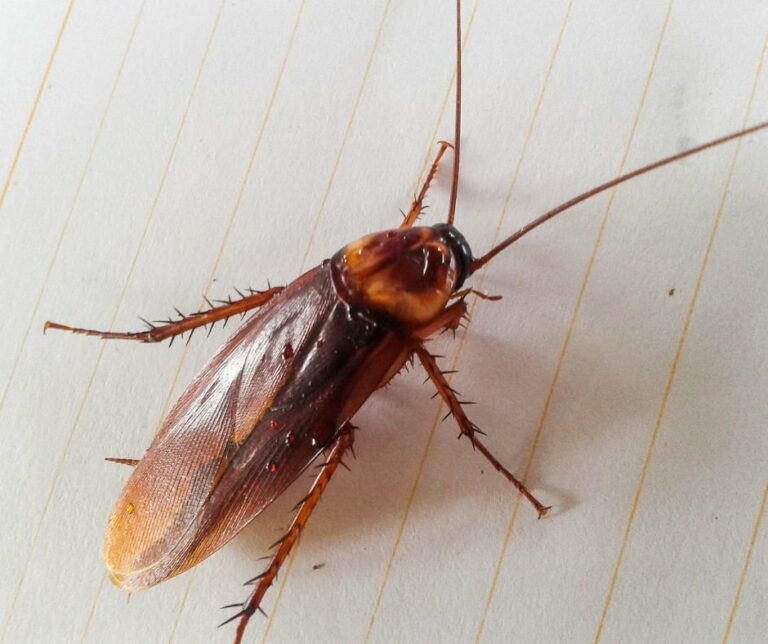How to Get Rid of Roaches in Your Kitchen
Published: January 31, 2024

Are you tired of seeing those pesky roaches scurrying around your kitchen? Not only are they unsightly, but they can also pose a health risk. Roaches can contaminate your food and spread diseases, so it's important to take action as soon as you spot them in your house. In this blog post, we will discuss effective methods to get rid of roaches in your kitchen and keep them from coming back.

Roach Identification
Before you start treating for roaches, it's essential to correctly identify the type of roach infesting your kitchen. The most common types of roaches found in kitchens are German cockroaches and American cockroaches. German cockroaches are smaller in size, light brown or tan in color, and have two dark stripes on their backs. American cockroaches are larger, reddish-brown in color, and have a distinctive yellowish figure-eight pattern on their heads.
Brownbanded cockroaches are another type of roach that can be found in your kitchen. These look similar to German Roaches, but don’t reproduce as quickly.
Identifying the type of roach will help you choose the most effective treatment method. Different species may require different approaches, so it's crucial to know what you're dealing with. If you are unsure, here are some additional resources.
Areas to Inspect and Treat for Roaches in your Kitchen
Once you've identified the type of roach infestation in your kitchen, it's time to inspect the areas where they hide and treat accordingly. Here are some common areas where roaches like to hide:
- Cabinets and Pantries: Check inside cabinets and pantries for any signs of roach activity. Look for droppings, egg casings, or a musty odor. many times you will see roaches scurry as you open the cabinet doors.
- Cracks and Crevices: Roaches love tight spaces, so inspect walls, baseboards, and any small cracks or crevices where they might be hiding. Look for holes in your drywall behind appliances, as these are prime cockroach hiding areas.
- Appliances: Roaches often find refuge behind appliances such as refrigerators, stoves, or dishwashers. Move these appliances and thoroughly clean the area.
- Sink and Drain: Roaches are attracted to moisture, so inspect your sink and drain for any signs of roach activity. Clean out any food debris or standing water.
- Counters: Many times you will find roaches hiding underneath the countertops if there is any gap between the counters and the cabinets.
After identifying the problem areas, it's time to treat them. There are several treatment options available, including:
- Baits: Roach baits contain a slow-acting poison that roaches consume and carry back to their nests, effectively eliminating the entire colony.
- Sprays: Roach sprays can be used as a spot treatment for immediate control. However, sprays alone may not be sufficient for long-term eradication.
- Dusts: Roach dusts are effective in hard-to-reach areas such as wall voids or cracks. The fine particles cling to the roaches' bodies and are ingested when they groom themselves.
It's important to follow the instructions on the product label and take necessary precautions while using these treatments.
Clean Thoroughly
To prevent future infestations, it's crucial to maintain a clean kitchen environment. Here are some tips for keeping your kitchen roach-free:
- Regular Cleaning: Clean up spills and crumbs immediately, as they attract roaches. Sweep and mop the floors regularly, wipe down countertops, and wash dishes promptly.
- Proper Food Storage: Store food in airtight containers to prevent roaches from accessing it. Keep pet food in sealed containers as well. Roaches are attracted to sugar based foods as well as protein and fat based foods, they do not discriminate, so seal potential food sources in airtight containers.
- Garbage Disposal: Empty your trash regularly and use sealed garbage cans with tight-fitting lids.
- Seal Entry Points: Seal any cracks or gaps in walls, windows, or doors that could serve as entry points for roaches.
Maintaining a clean kitchen will make it less appealing for roaches to invade your space.
Conclusion on How to Deal With Roaches in Your Kitchen
Dealing with a roach infestation in your kitchen can be a frustrating experience, but with the right approach, you can effectively get rid of them. Start by identifying the type of roach and then inspect and treat the problem areas accordingly. Remember to clean thoroughly and take preventive measures to keep roaches from returning.
If your efforts are not yielding results or if you have a severe infestation, it's advisable to call a professional pest control service. Professional help will have the expertise and tools to tackle even the most stubborn roach problems. Don't let roaches take over your kitchen take action today by calling the top pest management professionals All U Need Pest Control today!